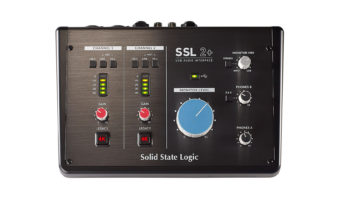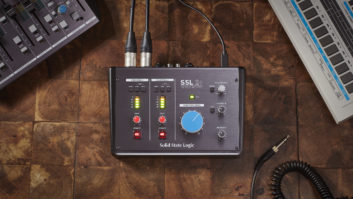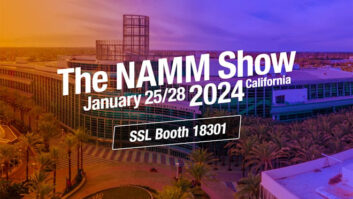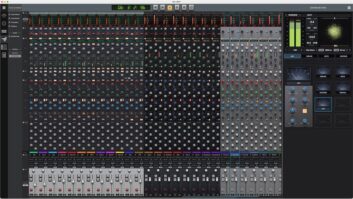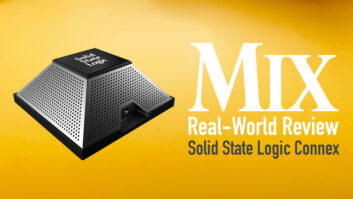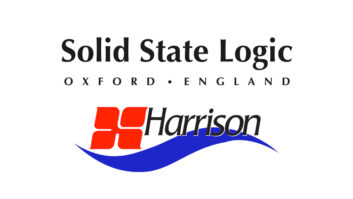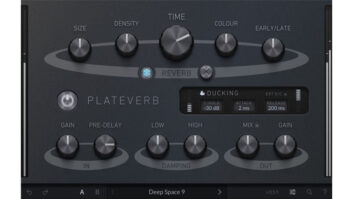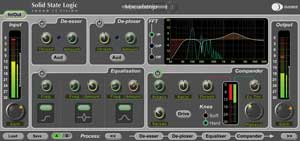
The Solid State Logic VocalStrip features an EQ, Compander, De-Esser and De-Ploser.
VocalStrip is the latest plug-in processor that runs on SSL’s Duende DSP unit. Like all Duende plug-ins, VocalStrip uses Duende’s 40-bit floating-point processing and is compatible with any VST, Audio Units or RTAS host. VocalStrip is a mono-only plug-in with four processor sections that are purpose-built for vocals. The four processors are Equalizer, De-esser, De-Ploser and a Compander section.
Along the Chain
What seems to be, at first glance, a limited EQ turns out to be a very effective three-band SSL EQ that’s perfect for all vocal recordings — except those in dire need of surgery due to extremely poor recording quality. There’s a 30- to 300Hz low-frequency shelving filter that has a slight boost right at its cut-off frequency. The second section is a high-Q, asymmetrical peaking/notch EQ with up to 12 dB of boost and 36 dB of attenuation. The last section is a high-band peaking equalizer that boosts/cuts up to 12 dB anywhere from 1 to 20 kHz. The Equalizer section borrows its graphical display from the X-EQ Duende plug-in, letting users view the input or output signal before or after equalization.
The Compander section starts with a downward expander set to a fixed ratio of 1.5 to 1. It has a single Threshold control that ranges from 0 to -96 dB (bypass). The compressor half of the Compander section has all the usual compressor suspects — with Attack, Release, Threshold, Make Up, Soft and Hard knee controls, plus a Drive button that adds harmonic character to the sound.
SSL calls the De-Esser section “intelligent” with two controls: Threshold and Amount. These controls interact and, as with any precision tool, proper de-essing calls for careful tweaking. Crank it all the way up, and you’ll completely extract any “S” sound, leaving a hole in the vocal track. A blue indicator shows when removal is happening, and the Audition button lets you hear what is being removed.
Threshold, Amount and the indicator appear again on the De-Ploser processor. De-Ploser removes momentary low-frequency bursts of energy — like “P” pops, wind noises, mic-stand bumps, etc.
Using VocalStrip
One of the best features in VocalStrip is the ability to chain the four sections in any order. I established early on that if all four sections are to be used, the order should be: EQ, De-Ploser, Compander, De-Esser.
I opened an old Pro Tools session of a dance pop record I had already mixed and began rebuilding the lead vocal sound. VocalStrip loads instantly and has 2,075 samples of latency — easily covered by my HD3 Accel Pro Tools ADC system. Duende plug-ins have an A/B feature where you can build a preset and then load a stored preset and compare the two.
Starting with the Equalizer, the FFT display showed many huge, random subsonic bumps and narrow resonant vocal peaks at 230 Hz. The bumps were produced by recent seismic activity, and the singer’s poor mic technique and recording room anomalies produced the resonant peaks. In addition, the vocal sound was very dark and boomy with occasional light sibilants. I started by rolling off bass to about 180 Hz with the low-frequency section — this helped immediately to “fit” the vocal track within the busy, bass-heavy dance production.
With the low frequencies somewhat reined in, I moved the notching filter to reduce the huge peaks centered around 230 Hz — you can type in parameter values if you wish. I could have used variable Q on this filter, because — depending on the arc of the melody — these peaks moved around in frequency, and broadening the notch would cover most of them. But maybe not! Actually the vocal already sounded a lot better and the effect of a 10dB notch was barely noticeable.
Next, to brighten up the whole vocal, I used the third section of the Equalizer to add 5 dB at 7 kHz with the intention of dealing with the increased sibilance later. This very broad peak EQ brightens smoothly — like an old program EQ, such as the classic Lang, Pultec or Langevin tube units.
With the De-Ploser next in the chain, I adjusted it by checking the output of VocalStrip on the FFT. Without this feature, I would be flying blind because some of these subsonic plosives were down at 20 Hz and below the usable bandwidth of my monitors. De-Ploser worked very well to reduce low-frequency plosives that were triggering the following Compander section with unwanted gain reductions. One minor complaint is that De-Ploser could use a faster release time to get out of the way quicker.
Compander works like any compressor plug-in. It was easy to get a solid and reliable setting. The singer was recorded well compressed, so I used a low 1.7-to-1 ratio and set the Threshold for about 3 to 6 dB of compression. The downward expander is optional — it operates fairly “rattle-free,” and I used it very subtly to keep down off-mic noises. Last, the Drive effect is wonderful and I wanted to use it on everything.
I put the De-Esser last in the chain because it took care of any sibilance exacerbated by treble boost from the Equalizer section and/or the average level boost acquired from the Compander section.
De-Esser works very well, killing most of the energy of sibilants in a natural way. For lightly de-essing this singer, I ran the Amount to 100 percent and dialed the Threshold somewhere around -25 dB. For another singer, I found heavier de-essing required the Amount to be down to 50 percent and Threshold at the most sensitive. In general, the de-esser attack time is a little slow and it would be good if it were “ganged” to the Amount control: As you increased Amount, the attack time would speed up.
Pro Quality Processing
As I’ve found with all the Duende plug-in processors, VocalStrip has a thoughtful and careful design that’s capable of immediate, professional results for getting a clear and focused sound. Like DrumStrip, VocalStrip enlists the best tool set to take the heavy lifting out of what is often an onerous task.
Barry Rudolph is an L.A.-based recording engineer/mixer. Visit
www.barryrudolph.com.

